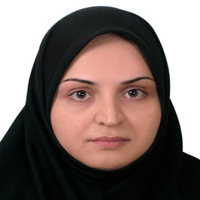Investigation of kinetic and intermediate products of acid orange7 removal by hybrid ozonation/photocatalytic processes
Author(s):
Abstract:
Most of dyes used in production processes caused serious environmental pollution when discharged into the environment. Azo dyes are the most used synthetic compounds in the textile، food، leather and cosmetic industries. Due to their toxicity and hard degradation، these kinds of compounds are classified as environmental hazardous materials that have to be treated before discharging to the environment. Acid orange 7 (AO7) is one of azo dyes that is resistant to aerobic degradation and under anaerobic condition is reduced to potential carcinogenic aromatic amines. Different physical methods such as adsorption، ultrafiltration، reverse osmosis، coagulation and electro coagulation are widely used for efficient dye removal but they just transport contaminants from water to sludge and generate secondary wastes which need more treatment. Advanced oxidation processes (AOPs) are suitable to mineralize dye wastewater. They are almost characterized by the efficient production of hydroxyl radicals. Radicals are highly reactive oxidant. Ozonation and photocatalytic treatment are often applied for decolorization of dye wastewaters. It is reported that ozone is an effective agent for reducing the color of wastewater especially azo dyes. TiO2 photocatalytic process is safe and does not require expensive oxidants، against ozonation. This process classified as an AOP method and can be carried out at mild temperature and pressure. The purpose of this study was to investigate hybrid photocatalytic and ozonation processes. Therefore، according to debarment of light penetration in dye wastewater، decoloration ability of ozone was used for improving photocatalytic process efficiency in a hybrid process. The effect of pH، dye and nano catalyst concentration، irradiation source power and ozone injection rate were investigated on removal efficiency in this process. Dye removal efficiencies decreased with increase in dye concentration and decrease in pH، ozone injection rate، catalyst concentration and irradiation source power. Optimum conditions of the process was occurred in pH of 9، UV-A lamp of 120 W، and nano material concentration of 128 mg/L with 50 mg/L of dye concentration and 20 mg/min of ozone injected (with 1 bar pressure and 1 lit/min of gas flow). In these conditions، dye removal was completed after 65 minutes. The result confirm the cleavage of the azo bonds، benzene and naphthalene rings as a result of treatment. The intensities of the absorbance peak at 485nm decrease rather fast than 230 and 310 nm. This shows that faster degradation of azo band in comparison with benzene and naphthalene rings. GC-MS analysis was performed to identify the intermediate products of process. According to GC-Mass test، 5-amino-1-naphthol، 1-naphthol and benzene compound (phenol، aniline and phthalic acid) were in decolorized solution. These compounds concentration increased in the first hour and then decreased. 3 and 7 hour were needed to reach optimum condition for removing naphthalene and benzene compounds، respectively. Reaction was followed by first order kinetic and was fitted to langmuir–hinshelwood model in optimum condition in all cases. First order reaction rate of decoloration (K) decreased with increase in dye concentration and decrease in pH، catalyst concentration and irradiation source power.
Keywords:
Azo , dye removal , kinetic , by , products
Language:
Persian
Published:
Quranic Knowledge Research, Volume:15 Issue: 2, 2015
Pages:
79 to 89
magiran.com/p1405157
دانلود و مطالعه متن این مقاله با یکی از روشهای زیر امکان پذیر است:
اشتراک شخصی
با عضویت و پرداخت آنلاین حق اشتراک یکساله به مبلغ 1,390,000ريال میتوانید 70 عنوان مطلب دانلود کنید!
اشتراک سازمانی
به کتابخانه دانشگاه یا محل کار خود پیشنهاد کنید تا اشتراک سازمانی این پایگاه را برای دسترسی نامحدود همه کاربران به متن مطالب تهیه نمایند!
توجه!
- حق عضویت دریافتی صرف حمایت از نشریات عضو و نگهداری، تکمیل و توسعه مگیران میشود.
- پرداخت حق اشتراک و دانلود مقالات اجازه بازنشر آن در سایر رسانههای چاپی و دیجیتال را به کاربر نمیدهد.
In order to view content subscription is required
Personal subscription
Subscribe magiran.com for 70 € euros via PayPal and download 70 articles during a year.
Organization subscription
Please contact us to subscribe your university or library for unlimited access!


